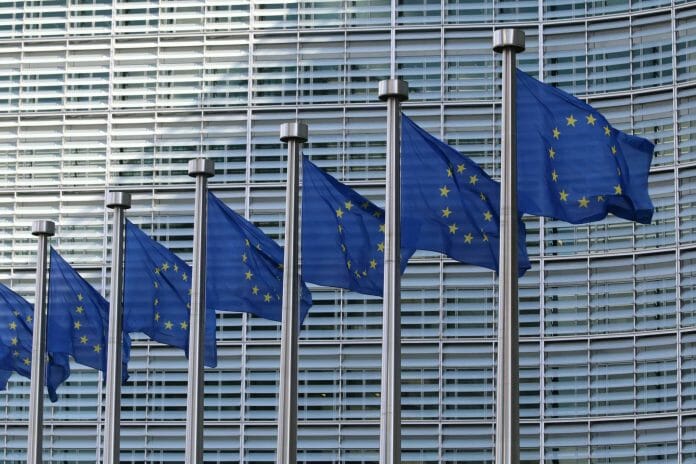By Peter Lundgreen,
The European answer to the economic downturn following the Covid-19 crises is another rescue fund, which will soon become a reality, though it’s not a magic solution and new problems will arise.
On Tuesday, July 7, the European Commission presented their new assessment of EU’s economic outlook. If one had been hoping for an encouraging reading, that wish was surely unfulfilled. The Commission now forecasts an 8.3 pct. drop in this year’s GDP growth, and that is for the whole EU.
By that forecast, the Commission has actually revised its expectations further down from the previous 7.4 pct. drop. It is the worst macroeconomic result since World War II and the expected rebound in the economy next year has also been lowered from 6.1 to 5.8 pct., showing that the lost economic ground this year will not even be recovered next year.
Among the largest EU economies, Germany is doing best by “only” subtracting 6.3 pct., due to the forecast from the European Commission. France’s economy is expected to lose 7.6 pct., Spain 10.9, and Italy with the worst result, at minus 11.2 pct.– these are massive plunges and such a swift economic nosedive is unchartered territory in terms of prior experience.
The significant and large movements are difficult to predict accurately, so moving forward, there will be more revisions of the expectations. A stabilizing factor in the economy that I pay attention to is the private consumption. In my view, consumers were the biggest economic force before the Covid-19 crisis, and therefore I look at how quickly consumers return again.
After the European Commission’s latest economic forecasts were completed, another disappointing economic figure was released from Germany some days ago. The industrial production for the month of May showed only an increase of 7.8 pct. against expected 10 pct. This may well be an example of a sector where the Covid-19 crisis is going to draw long tracks.
The country that probably explores the most severe macroeconomic damages is Italy. The last big hit for the economy was the global financial crisis, where one could make the unemotional observation that the country never really recovered from the global crisis.
For over a decade now, I have argued to avoid investments in the Southern European countries because the macroeconomic environment is way too weak and no sufficient reform work is done to increase the macroeconomic fitness. That kind of reform standstill is dangerous in a world that has a tendency to move ever faster forward.
To get the troubled economies back on track, the European Commission plans to launch an up to 750-billion-euro large rescue fund that is currently being negotiated among the member countries. So far, I regard the rescue fund as lax in terms of precise operational objectives and targets in respect of how the funds must be utilised to move the affected countries forward. I fear that most of the monetary firepower will be used to bring back the Southern European economies to the stage before the Covid-19 crisis, which wasn’t impressive. I haven’t come across any truly innovative thinking concerning about how to spend/invest at least a smaller portion of the funds for true progress and change.
Maybe the internet connectivity in Italy and in the southern fellow countries will be improved, though that seems to be it. In that context, it should be mentioned that the general internet connectivity in Italy is at the same level as in several Emerging Market countries.
From a professional investor’s perspective, it would catch my interest if the ambitions would have a focus on how to challenge the Silicon Valleys of the world like the original Silicon Valley, Zhongguancun in Beijing, and the strong expanding “artificial Intelligence valley” in Shenzhen, China.
I judge that the European stock markets have already, to a large extent, priced in the huge bulk of money that the fund will inject in the European economy. I am convinced that investors in the stock markets will be disappointed if the rescue fund doesn’t become a reality, though it is my main scenario that the negotiations in creating the fund will move fast forward.
The financial markets will feel the relief as the likelihood for the fund creation grows, but that is the short to maximal mid-term thinking.
Regardless how the fund is constructed, it represents a significant increase of government debt and it could be ironic that the fund is called “Next Generation EU”. The part of the fund that is directly funded in the market is planned to issue debt with maturities until 2059. This means that people who are not even born yet, inherit the obligation to pay back the current economic rescues. If the coming citizens add the debt for the ghost airports in Spain and the highways where only a few cars drive, then the next generation in EU might question why they should repay this debt at all? If so, then the current Covid-19 crisis is nothing compared to the risk described in questioning the debt repayment.
One could claim that this is a very long-term risk, which is an argument. Though despite the current positive mood in the stock markets, the concern about the debt repayment could spread among bond investors at any time. Currently it’s a low risk, but it’s there and if this disease spreads, then all Southern European countries will face a huge challenge when issuing new debt.
Peter Lundgreen is the Founding CEO of Lundgreen’s Capital. He is a professional investment advisor with over 30 years of experience and a power entrepreneur in investment & finance. Peter is an international columnist and speaker on topics about the global financial markets.









